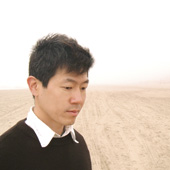Pine Crane Pavilion (Songhelou; 松鶴樓), Suzhou
In the heart of Suzhou is a remarkable bazaar stretched along two parallel streets: Guan▪qian▪jie (觀前街) and Tai▪jian▪nong (太監弄). Among the scores of silk shops, department stores, and throngs of gawkers and shoppers, there are several of the city’s most illustrious restaurants. Among them, Song▪he▪lou (松鶴樓), meaning “Pine Crane Pavilion,” stands out as the grandest and most famous. Specializing in traditional Suzhou cooking (蘇幫菜; su▪bang▪cai), a variation of Jiangzhe cuisine, the restaurant has been in business since 1757, serving host to emperors and ordinary folk like me in search of links to the past.
 Songhelou is the creator of “Squirrel Fish” (松鼠魚; song▪shu▪yu), a fried boneless fish dressed with a sweet-and-sour sauce. It is one of the most famous Chinese dishes, but also one of the most difficult to make. Emperor Qianlong (1711-1799) tasted it while on his way touring southern
Songhelou is the creator of “Squirrel Fish” (松鼠魚; song▪shu▪yu), a fried boneless fish dressed with a sweet-and-sour sauce. It is one of the most famous Chinese dishes, but also one of the most difficult to make. Emperor Qianlong (1711-1799) tasted it while on his way touring southern
 The two other dishes I ordered were both “drunken” but of altogether different flavors. The first was called “Ao▪you Chicken” (奧油雞; ao▪you▪ji), which was the local take on Shanghai’s Drunken Chicken. It was straightforward enough: boiled chicken marinated in salt and Shaoxing rice liquor, as far as I could tell.
The two other dishes I ordered were both “drunken” but of altogether different flavors. The first was called “Ao▪you Chicken” (奧油雞; ao▪you▪ji), which was the local take on Shanghai’s Drunken Chicken. It was straightforward enough: boiled chicken marinated in salt and Shaoxing rice liquor, as far as I could tell.
 The second dish, which I ordered on account of the poetic name alone, was loosely translated as: “A Liquored Life; A Dreamy Death” (醉生夢死; zui▪sheng▪meng▪si). It turned out to be a bowl of periwinkles with a few clams thrown in. As alluded by the name, they were marinated in Shaoxing while still alive, and then cooked. Star anise gave the dish a touch of dry and sweet flavor. To eat the periwinkles, you have to hold one between your fingers and suck out the inside. Sometimes you need to spit out the little hard flap that gets in the way. But no biggie, they were delicious and lots of fun to eat—especially enjoyable with a cold beer.
The second dish, which I ordered on account of the poetic name alone, was loosely translated as: “A Liquored Life; A Dreamy Death” (醉生夢死; zui▪sheng▪meng▪si). It turned out to be a bowl of periwinkles with a few clams thrown in. As alluded by the name, they were marinated in Shaoxing while still alive, and then cooked. Star anise gave the dish a touch of dry and sweet flavor. To eat the periwinkles, you have to hold one between your fingers and suck out the inside. Sometimes you need to spit out the little hard flap that gets in the way. But no biggie, they were delicious and lots of fun to eat—especially enjoyable with a cold beer.
 In
In
Labels: chinese food, songhelou, squirrel fish, suzhou
.jpg)



.jpg)













































